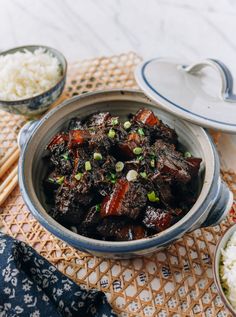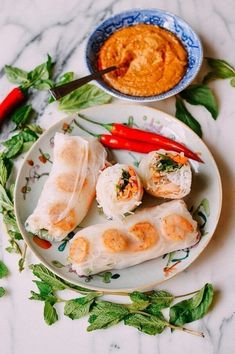What Distinguishes Vietnamese Cuisine From Chinese Cuisine?

The most important aspect of our existence has always been food. And it’s become fashionable to indulge in good eating habits. And whether it’s Indian, Mexican, or Greek cuisine, each has its distinct flavor and character that distinguishes it from the others. They are distinguished by their distinct characteristics, exquisite and diverse cooking skills, and the color, scent, taste, and look that distinguishes them from one another.
The most important term for eating habits has always been “tempting food.” And, in order to learn everything there is to know about them, let’s start with some fundamental knowledge.
Cuisine Viet Nam
From being regarded as one of the healthiest cuisines globally, Vietnamese cuisine is known for its careful use of spices and a great mix of fresh herbs and meat in fine-tasting meals.
French food plays a significant influence on Vietnamese cuisine. In their meals, the cuisine displays a blend of five primary flavors because of the French occupation of Vietnam. Bean and fish sauce, shrimp paste, rice, fruits, vegetables, and fresh herbs are among the most prevalent components utilized in their meals. Mint, ginger, long coriander, Vietnamese mint, Saigon cinnamon, Thai basil, lime, and bird’s eye chile are all used in Vietnamese cuisine. And each of these recipes has its distinct flavor and aroma that highlights one or more of these characteristics. And traditional Vietnamese food is more commendable owing to its little use of oil and dairy, dynamic contrasting textures, and availability of fresh herbs and vegetables in their dishes.
And, because most of the foods are produced with rice, such as rice noodles, rice sheets, and rice flour, the cuisine is typically low in sugar and gluten-free.
Cuisine from China

Chinese food is often considered to be the most crucial aspect of Chinese culture. The cuisine is made up of dishes from throughout China and dishes from Chinese immigrants who have established themselves in other areas of the world. Because of its historical significance, Chinese cuisine has affected many other countries of Asia, enabling minor changes to local dishes. When it comes to Chinese staple foods, they have plenty of noodles, rice, soy sauce, tofu, and tea, all of which are frequently consumed as part of their daily meals.
Chinese cuisine, like all cuisines, has its specialties, and it is enjoyed by people all over the world. And the cooking techniques used for various meals are influenced by the country’s historical history and influential ethnic groups. And tools such as chopsticks and woks are widely recognized and used worldwide.
Furthermore, the supply of locally accessible components depends entirely on China’s geographical characteristics. China’s climate is diverse, ranging from tropical in the south to subarctic in the north.
When it comes to Chinese food, characteristics like the look and nutrition of the meal and the scent, color, and taste best indicate the authenticity of the dish.
All Asian cuisines, whether Thai, Chinese, Japanese, or Vietnamese, have certain commonalities in flavor and foundation materials. However, these cuisines differ due to cultural differences, geographical conditions, and nutritional needs. At the conclusion of this post, you’ll understand the differences between Vietnamese and Chinese cuisine.
There are many similarities between Vietnamese and Chinese cuisine in terms of essential aspects such as ingredients, flavors, and sauces.
Both cuisines employ rice and noodles as a substrate, soy sauce as a flavoring, and pork and beef as main ingredients. However, the contrasts between Vietnamese and Chinese cuisine will be explored in the following parts.
When it comes to the usage of herbs and oils in Vietnamese and Chinese cuisine, the following are some of the differences:
Fresh herbs and green vegetables are often used in Vietnamese cooking.
They’re frequently served raw with a mild sauce as a side dish.
To impart a delicate and light flavor to the cuisine, they use very little cooking oil and rarely fry their herbs.
Vietnam is a tropical nation, fresh vegetables are readily accessible, and they feature prominently in the majority of cuisines. For their cooling properties, mint and basil leaves are utilized.
On the other hand, Chinese people cook their herbs and vegetables in flavorful cooking oils and use soy sauce to bring out intense flavors in their dishes.
Vegetables aren’t simply served as side dishes; they’re often prepared with other ingredients like meat, rice, or noodles; because of the excessive usage of oil and sauce, Chinese food has a more amazing calorie content and has robust flavors.
Comparing the flavors of Vietnamese and Chinese meals:
Vietnamese food tastes very fresh and has mild flavors due to the use of fresh ingredients and less oil. Light components like rice or noodles, as well as soups, form the foundation of Vietnamese cuisine. The freshness is enhanced by the mint and basil leaves.
Thin slices of chicken, pig, or beef are given to give the entrée just the appropriate amount of flavor without dominating the mild flavors of the side dishes and soups. The herbs and vegetables are fried with the food’s foundation ingredients, and a variety of salt and sugar sauces are utilized. All of these light ingredients and gentle flavors work well together and provide a pleasant experience for anybody. The food’s protein component, such as chicken, hog, or beef, is served in massive amounts and cooked in spices and sauce (particularly in the Szechwan region).
Although neither Chinese nor Vietnamese food is scorching, Vietnamese food appears to be slightly less spicy than Chinese due to the use of mild flavors due to the extensive use of flavored cooking oils, soy sauce, and chili sauce.
When comparing the nutritional benefits of Vietnamese and Chinese cuisine:
Vietnamese cuisine is seen to be healthier than Chinese cuisine, owing to the use of fresh ingredients and the use of less oil; because Vietnam is a tropical nation, fresh herbs and vegetables are readily accessible. They are frequently eaten raw as a complement to their main dishes.
Due to the usage of rice, fresh veggies, soup, and fish sauce, Vietnamese food tends to include the proper quantity of carbs, vitamins, and proteins.
China is a hilly nation, and its inhabitants require many calories. As a result of the use of cooking oils in frying vegetables, meat, and essential ingredients, the heavy usage of sauce, and the use of more considerable amounts of meat, Chinese food has a more shocking calorie content.
The French colonization of Vietnam is responsible for most of these modifications in Chinese and Vietnamese cuisine.
Differences in cultural impact on Chinese and Vietnamese cuisine:

The Mongolian conquest of Vietnam brought Chinese and Vietnamese cuisine closer together; however, the Chinese used soy sauce while the Vietnamese generally used fish sauce.
The French conquest of Vietnam was a significant factor in the disparity between Vietnamese and Chinese cuisine. Mild flavors and the use of fresh herbs were introduced to the Vietnamese by the French. After the French colonization, most Vietnamese dishes incorporated coffee, potatoes, and baguettes.
The temperature in Vietnam is hot and humid because it is a tropical country. As a result, veggies are frequently employed in their cuisine.
Rice noodles are a staple of Vietnamese cuisine and are pretty nutritious. They can be eaten raw with a dash of fish sauce or blended into a soup. Due to considerable Chinese influence on food, saltier sauces are utilized in northern Vietnam; as we travel south, the flavor of Vietnamese food shifts from salty to somewhat sweeter.
China is a chilly and mountainous nation, and Chinese people require many calories to keep their bodies warm. As a result, Chinese cuisine is a calorie-dense diet.
Chinese cuisine uses many ingredients and serves them in enormous amounts. Vegetables, noodles, and pork are cooked in oil and then served with a thick sauce coating. Both Chinese and Vietnamese cuisines are pretty mild in terms of heat. Chinese cuisine is well-known in Western nations due to its rich flavors and scent.
Cuisines in demand
Vietnamese pho (noodle soup with chicken or beef), Banh mi (carrot and pork sandwich), and Bun Bo hue are some of the most popular dishes in the country (another broth noodles made with vermicelli noodles). Mild flavors and fresh herbs characterize Vietnamese cuisine.
Sichuan pork, Kung pao chicken, and fried noodles are three prominent Chinese meals. Chinese cuisine is known for its delectable aromas, sauce layers, and visual appeal.
So, in terms of their foundation ingredients, sauces, and flavors, Chinese and Vietnamese cuisines are comparable to one another and other Asian cuisines. However, they each have their unique approach to combining these components to complement one another and provide that delectable flavor that you will return to again and again.
On a platter, each of these cuisines represents a different culture. They differ significantly in flavor, texture, and scent. Both of these cuisines, however, are equally pleasurable and delectable. So the next time you go out to eat, try Chinese or Vietnamese cuisine.











